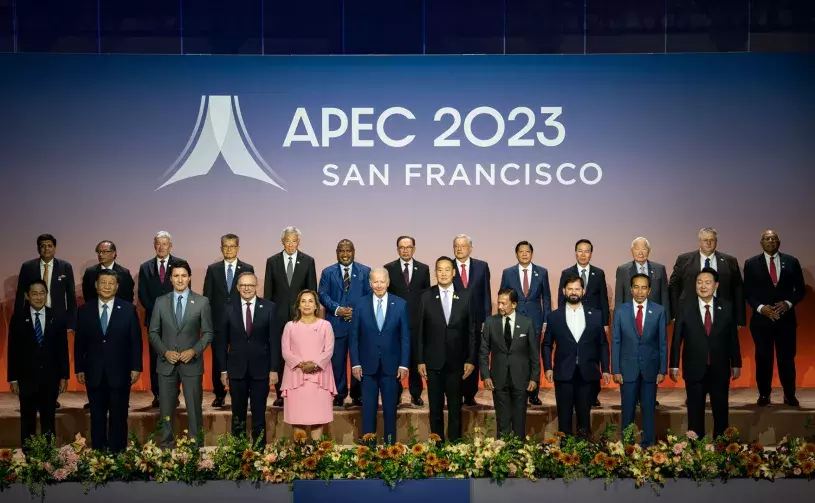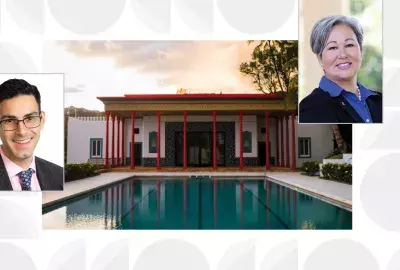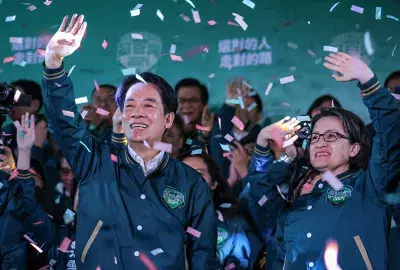Error message

OFFICE/DEPARTMENT
By Charles E. Morrison
EWC Senior Fellow
This commentary originally appeared in The Honolulu Star-Advertiser on Nov. 19, 2023.
The Biden-Xi summit ahead of the APEC Leaders Meeting in San Francisco this past week marked a significant effort by the two powers to set limits to their rivalry and restore a more positive tone to their relationship. Whether this is another one-off episode or an effort that can be sustained amid many differences remains an open question.
Prior expectations for the meeting were set appropriately low. Since the main parameters for the relationship have been established by strategic and economic policies rooted in both countries’ national outlooks, politics, and interests, they will not change any time soon. In the US, the Trump and Biden administrations were both clear that they would counter economic or strategic behavior that they regarded as predatory, promote domestic industrial interests, and protect US allies. On the Chinese side, Xi Jinping will not retreat from policies of opposing Taiwan independence, pursuing claims in the South China Sea, and seeking technological parity with western powers. Many other differences remain on human rights, international rules, current global conflicts, and other issues.
A threefold approach is needed to manage the relationship: First, to recognize and accept the established parameters and improve understanding of the thinking and politics behind them, with the hope of narrowing differences over time. Second, to identify areas of common or complementary interests, which will mostly be in technical, rather than political, arenas. Third, to elevate visibility and effective implementation for cooperation in some of these key, useful areas.
The agreed restoration of military-to-military contacts is highly important, but it is really just about getting back to normal. More significant for the American public is the pledge to work together on fentanyl, the precursor chemicals for which are manufactured in China. This has been pledged twice before, so what will be different this time? What collaborative mechanisms can be both visible and effective in addressing the crisis? This should be seen as a priority if both countries truly wish to improve their relations.
Xi’s decision to come to San Francisco elevated this year’s APEC from being a ho-hum affair, at least for the media. But the fact is that APEC cooperation exists at multiple levels involving dozens of ongoing economic and social projects at any one time, as outlined in the East-West Center/National Center for APEC report APEC Matters for America.
But aside from the multilateral, technical agenda, most of the time of senior leaders is spent in side-meetings that can cover politically delicate or bilateral issues. In fact, APEC has been called a venue for “speed dating” for leaders, not just with other leaders, but also foreign business communities. Like other dates, interest focuses less on the usual pairings and more on those more rarely seen together. The Biden-Xi meeting would not have occurred within a year of the coming US election without the APEC forum as an excuse, helping demonstrate the organization’s continuing geopolitical relevance.
In recent years, the US and China both have been emphasizing smaller international groupings within their respective spheres of influence, or those they hope to have. For the US, these include its traditional allies, plus the “Quad” (with Australia, India and Japan) and various cooperative triangles including AUKUS (Australia, UK, and US), Japan-Korea-US, and Japan-Philippines-US. China, meantime, has prioritized the BRICS summit of emerging economies and the Shanghai Cooperation Organization of mainly Central Asian states. Notably, both these also include Russia.
This has come at some expense to broader arrangements like APEC, which now has less visibility than in 2011 when the leaders’ summit was held in Honolulu during the United States’ last year of hosting, which rotates among members. While much concrete business is with friends, maintenance of a peaceful global order and addressing planetary challenges also requires reaching out to those with different views. The international architecture needs both.
A significant Biden-Xi pledge was for more frequent contact by phone. In a world of virtual communications, aside from emergencies, a regularly scheduled monthly meeting between the leaders of the two largest economies seems both reasonable and useful. But it will take political will and determination. So far, we’ve seen the movie before, so the question is whether the ending will be any different. The stakes for both countries and the world are very high.
Photo: Presidents Biden and Xi joined other regional heads of state at the APEC 2023 summit in San Francisco. Image by Kent Nishimura/Getty Images.
By Charles E. Morrison
EWC Senior Fellow
This commentary originally appeared in The Honolulu Star-Advertiser on Nov. 19, 2023.
The Biden-Xi summit ahead of the APEC Leaders Meeting in San Francisco this past week marked a significant effort by the two powers to set limits to their rivalry and restore a more positive tone to their relationship. Whether this is another one-off episode or an effort that can be sustained amid many differences remains an open question.
Prior expectations for the meeting were set appropriately low. Since the main parameters for the relationship have been established by strategic and economic policies rooted in both countries’ national outlooks, politics, and interests, they will not change any time soon. In the US, the Trump and Biden administrations were both clear that they would counter economic or strategic behavior that they regarded as predatory, promote domestic industrial interests, and protect US allies. On the Chinese side, Xi Jinping will not retreat from policies of opposing Taiwan independence, pursuing claims in the South China Sea, and seeking technological parity with western powers. Many other differences remain on human rights, international rules, current global conflicts, and other issues.
A threefold approach is needed to manage the relationship: First, to recognize and accept the established parameters and improve understanding of the thinking and politics behind them, with the hope of narrowing differences over time. Second, to identify areas of common or complementary interests, which will mostly be in technical, rather than political, arenas. Third, to elevate visibility and effective implementation for cooperation in some of these key, useful areas.
The agreed restoration of military-to-military contacts is highly important, but it is really just about getting back to normal. More significant for the American public is the pledge to work together on fentanyl, the precursor chemicals for which are manufactured in China. This has been pledged twice before, so what will be different this time? What collaborative mechanisms can be both visible and effective in addressing the crisis? This should be seen as a priority if both countries truly wish to improve their relations.
Xi’s decision to come to San Francisco elevated this year’s APEC from being a ho-hum affair, at least for the media. But the fact is that APEC cooperation exists at multiple levels involving dozens of ongoing economic and social projects at any one time, as outlined in the East-West Center/National Center for APEC report APEC Matters for America.
But aside from the multilateral, technical agenda, most of the time of senior leaders is spent in side-meetings that can cover politically delicate or bilateral issues. In fact, APEC has been called a venue for “speed dating” for leaders, not just with other leaders, but also foreign business communities. Like other dates, interest focuses less on the usual pairings and more on those more rarely seen together. The Biden-Xi meeting would not have occurred within a year of the coming US election without the APEC forum as an excuse, helping demonstrate the organization’s continuing geopolitical relevance.
In recent years, the US and China both have been emphasizing smaller international groupings within their respective spheres of influence, or those they hope to have. For the US, these include its traditional allies, plus the “Quad” (with Australia, India and Japan) and various cooperative triangles including AUKUS (Australia, UK, and US), Japan-Korea-US, and Japan-Philippines-US. China, meantime, has prioritized the BRICS summit of emerging economies and the Shanghai Cooperation Organization of mainly Central Asian states. Notably, both these also include Russia.
This has come at some expense to broader arrangements like APEC, which now has less visibility than in 2011 when the leaders’ summit was held in Honolulu during the United States’ last year of hosting, which rotates among members. While much concrete business is with friends, maintenance of a peaceful global order and addressing planetary challenges also requires reaching out to those with different views. The international architecture needs both.
A significant Biden-Xi pledge was for more frequent contact by phone. In a world of virtual communications, aside from emergencies, a regularly scheduled monthly meeting between the leaders of the two largest economies seems both reasonable and useful. But it will take political will and determination. So far, we’ve seen the movie before, so the question is whether the ending will be any different. The stakes for both countries and the world are very high.
Photo: Presidents Biden and Xi joined other regional heads of state at the APEC 2023 summit in San Francisco. Image by Kent Nishimura/Getty Images.
East-West Wire
News, Commentary, and Analysis
The East-West Wire is a news, commentary, and analysis service provided by the East-West Center in Honolulu. Any part or all of the Wire content may be used by media with attribution to the East-West Center or the person quoted. To receive East-West Center Wire media releases via email, subscribe here.
For links to all East-West Center media programs, fellowships and services, see www.eastwestcenter.org/journalists.







